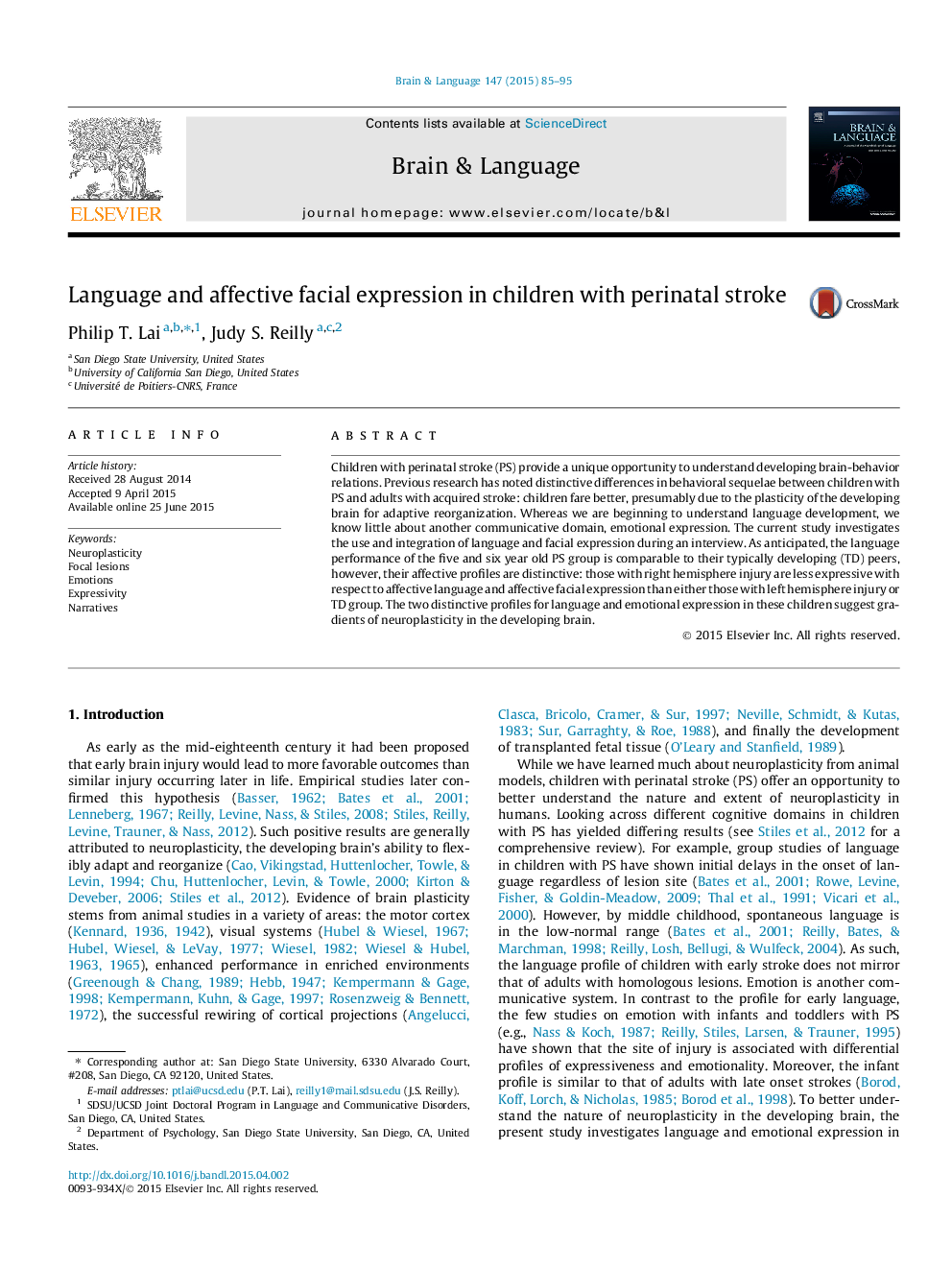Introduction
As early as the mid-eighteenth century it had been proposed that early brain injury would lead to more favorable outcomes than similar injury occurring later in life. Empirical studies later confirmed this hypothesis (Basser, 1962, Bates et al., 2001, Lenneberg, 1967, Reilly et al., 2008 and Stiles et al., 2012). Such positive results are generally attributed to neuroplasticity, the developing brain’s ability to flexibly adapt and reorganize (Cao et al., 1994, Chu et al., 2000, Kirton and Deveber, 2006 and Stiles et al., 2012). Evidence of brain plasticity stems from animal studies in a variety of areas: the motor cortex (Kennard, 1936 and Kennard, 1942), visual systems (Hubel and Wiesel, 1967, Hubel et al., 1977, Wiesel, 1982, Wiesel and Hubel, 1963 and Wiesel and Hubel, 1965), enhanced performance in enriched environments (Greenough and Chang, 1989, Hebb, 1947, Kempermann and Gage, 1998, Kempermann et al., 1997 and Rosenzweig and Bennett, 1972), the successful rewiring of cortical projections (Angelucci et al., 1997, Neville et al., 1983 and Sur et al., 1988), and finally the development of transplanted fetal tissue (O’Leary and Stanfield, 1989).
While we have learned much about neuroplasticity from animal models, children with perinatal stroke (PS) offer an opportunity to better understand the nature and extent of neuroplasticity in humans. Looking across different cognitive domains in children with PS has yielded differing results (see Stiles et al., 2012 for a comprehensive review). For example, group studies of language in children with PS have shown initial delays in the onset of language regardless of lesion site (Bates et al., 2001, Rowe et al., 2009, Thal et al., 1991 and Vicari et al., 2000). However, by middle childhood, spontaneous language is in the low-normal range (Bates et al., 2001, Reilly et al., 1998 and Reilly et al., 2004). As such, the language profile of children with early stroke does not mirror that of adults with homologous lesions. Emotion is another communicative system. In contrast to the profile for early language, the few studies on emotion with infants and toddlers with PS (e.g., Nass and Koch, 1987 and Reilly et al., 1995) have shown that the site of injury is associated with differential profiles of expressiveness and emotionality. Moreover, the infant profile is similar to that of adults with late onset strokes (Borod et al., 1985 and Borod et al., 1998). To better understand the nature of neuroplasticity in the developing brain, the present study investigates language and emotional expression in young school age children with PS. Will their profile of affective expressivity follow that of language, such that by school age, the children with PS perform like their typically developing (TD) counterparts, regardless of lesion site? Or will the emotion profile continue to be characterized by site-specific deficits mirroring that of adults with acquired strokes? To address these questions, we investigate the production of emotional expression in both language and facial expression, as well as their integration during a semi-structured naturalistic biographical interview. Together these results will enhance our understanding of both the nature and extent of neuroplasticity in the developing brain.
Conclusion
Children with perinatal stroke provide an opportunity to explore neural plasticity within and across different communicative systems. Previous research has recognized that the behavioral and cognitive consequences of a stroke are greatly reduced in children relative to adults with comparable lesions. This is presumably due to the plastic nature of the developing brain in early childhood, and suggests adaptive reorganization through the development of alternate neural circuitry and/or utilizing existing neural circuitry to recruit and maintain functional processing. In the current study, two communicative systems, language and emotion expression, were investigated to gauge the extent and limitations of neural plasticity in five- and six-year-old children with PS. As anticipated, in this conversational context, the core aspects of language for the children with perinatal stroke were comparable to their TD peers. However, hemispheric differences were found as the RHI group displayed a flatter profile both in the use and production of affective language and in the overall production of facial expressions when compared to the LHI and TD groups. The results are consistent with previous infant data as well as the adult stroke literature, suggesting that neural plasticity differs across communicative systems. Specifically, the two distinctive profiles for language and emotional expression in these children suggest graded plasticity in the developing brain.


